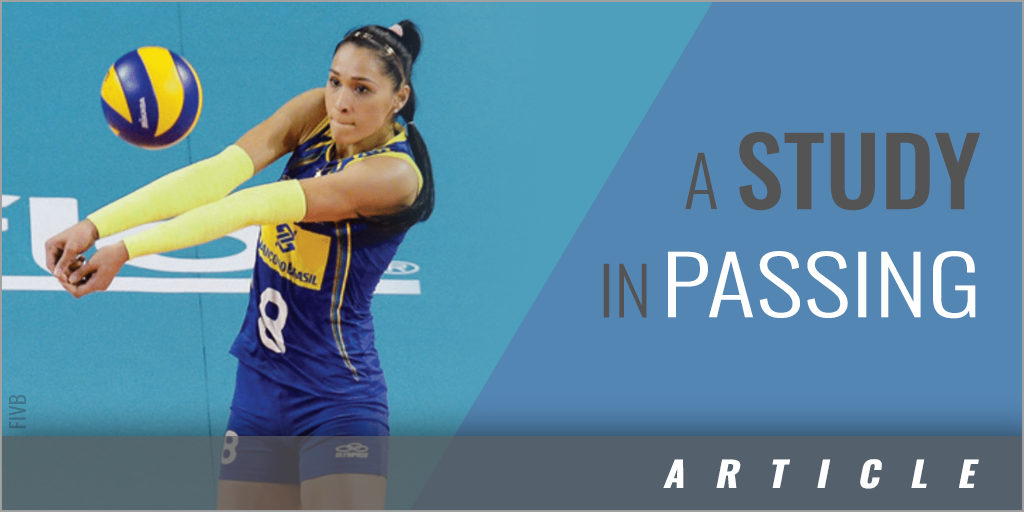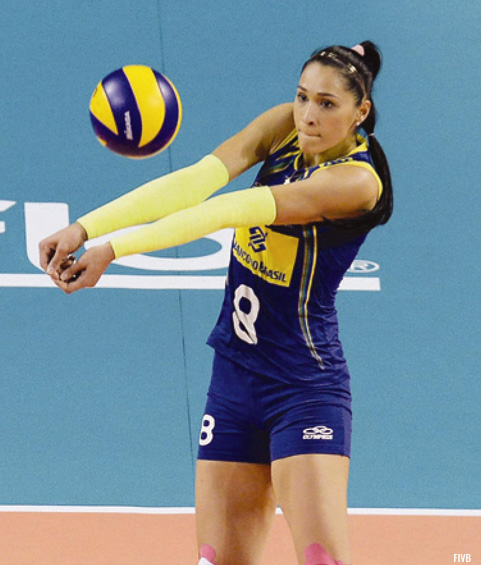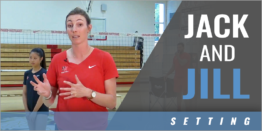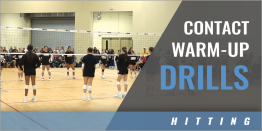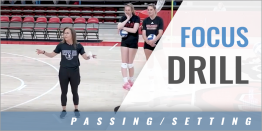|
By: Jim Miret, Front Range Volleyball Originally Published in: Coaching Volleyball Copyright and Provided by: American Volleyball Coaches Association In this article, we wanted to test the paradigm that serves in the women's game are coming to passers so quickly that it is virtually impossible to get behind the ball to pass it effectively. Many coaches also believe that the less their passers move their body and their platforms, the better ability they will have to control the ball. Because of this standard point of view, many coaches believe the primary technique for passing the serve should be to face away from the target and key on the passer's ability to angle their platform to a target. I think that looking at conditions that influence technical responses is a good way to go about making coaching and training decisions. However, as critical thinkers, it's important that we are always testing the conditions that we believe exist if they are going to be the determining factor in the techniques that we choose to teach.
If you believe in the above paradigm, what percent of the time do you guess the best passers in the world would be able to get behind the serve? 10%? 20%? Maybe 30%? If we accept that at the highest levels of volleyball, serves get to the passers so quickly that they can't get behind the ball and therefore must rely on angling their platform to pass the ball, we would expect the percentage of times that passers were able to get behind the ball to be low. Why not test our hypothesis!? For this article, we sampled matches from the 2019 Women's World Championships. We looked at serve-receive passes executed by the countries of Brazil, United States, Netherlands, Russia, Japan, Dominican Republic, Serbia and China. Our assumption is that international servers are serving the ball at the fastest speeds in the world, so the passers at that level will have the most difficult challenge to get behind the ball. Our sample size was 3,255 serve-receive passes by the aforementioned countries. The criteria that we chose to evaluate was the percent of times international passers from those countries at the 2019 World Championships were able to get their bodies behind the ball to pass. We compared that to the percentage of times that the same passers were forced to play the ball where the ball had either moved outside of their body line or they had to turn away from the target. Let's look at our results: Of the 3,255 service receive attempts that we sampled, 69% of the time we found that the passers were able to get behind the ball. Does that number surprise you? 31% of the time passers had to open their body away from the target, or completely rely on their platform angle to create the angle needed to bring the pass to the target, most often their setter. Perhaps the most fascinating observation we made from the video was that when passers were able to get behind the ball, their passing average was higher compared to the times they were solely depending on their platform angle. As we viewed the 3,000+ passing moves in our examination of video from the 2019 Women's World Championships, we can state that this paradigm (that passers must move their platform outside their body to pass a ball that is coming fast) is false according to our data. Passing is a dynamic, athletic and reflexive action. Accordingly, almost every ball that a passer receives in a match is different, so passers must have many passing moves to use at their discretion. In our sample we noticed passers using their entire body - legs and arms as well as torso movements at times to help control the ball. We believe anytime you try too much to restrict or limit movement you are restricting a player's athletic response and will make it more difficult to achieve the desired result. We were also curious to see how much time it took from the contact of the server's hand to the contact of the passers' platform. We sampled serves from the same event for the teams from USA, Japan, Brazil, Russia, China and Serbia. We did not count short serves (a very small percentage of serves attempted) and we did not count serves that contacted the net. According to our sample of 363 serves, 51% of the time it took the ball 1 second or less to go from the server's contact to contact on the passer's platform. Our theory is that an international player's serve will be reaching the passers faster than at any other level of play. Therefore, if the passers in this environment can get their body behind the ball almost 70% of the time, that is an effective technique to be teaching at all levels. I have heard of and I have taught a lot of different passing techniques in my career. Take the ball o your left hip, take the ball o your right hip, keep your right foot forward all the time, keep your left foot forward all the time, face where the ball is coming from, face where you want the ball to go, the ball only knows your angle so just key on the angle of your platform ... just to name a few. We do not believe there is only one right way to pass the ball. In fact, great volleyball players often adopt a style of passing that is unique to them and is well-suited to their athletic ability to achieve the desired result. I think too often we look at skills in volleyball as being linear - a right way versus a wrong way, and this can be extremely limiting and frustrating for players.
Instead, what if we consider volleyball as a series of situations that we are trying to solve? Imagine yourself trying to match techniques to maximize execution in the situation that you are currently faced with. Serve-receive passers at all levels are going to need a myriad of techniques - a technique to use when the ball takes them low and to their left, when the ball takes them low and to their right, when the ball drops quickly short in front of them, when the ball rises up and angles away from them high to their left and high to their right, etc. Instead of thinking about one technique to teach that is right and categorizing everything else as wrong or attempting to put players in a position where they've got to create one situation nearly 100% of the time, let's think about passing as a fluid skill - one where, as I move to the ball, I must recognize the situation that I've been taken into and that gives me the flexibility to choose the technique that's going to best help me execute the pass based on my read of the situation. In my gym I've found that teaching my players to try and get behind every serve as much as I see the top international female passers doing provides a great benefit for my players. As players attempt to get behind every serve, I can see a marked increase in their movement capacity on the court. They are forced to learn to read the serve earlier and judge contact quality and direction of the server's hand. As players strive to get behind the ball in serve-receive they will be faced with situations where no matter how hard they work, the ball will be outside their body when the ball makes contact with their platform...and this is okay! If I am doing my job effectively, I will have trained them in a move that focuses on platform angling and control when the ball is outside their mid-line. So, they move to try and get behind the ball, and if they can't, they select a technique that will allow them the freedom and creativity to make a productive pass. Giving players the athletic freedom to move their body as well as their platform and make it part of the pass or defensive moves is something we see international players do quite often. Better ball control is the key to playing better volleyball, period. We hope this will take you on a paradigm shift to helping your players become better serve-receive passers. |
